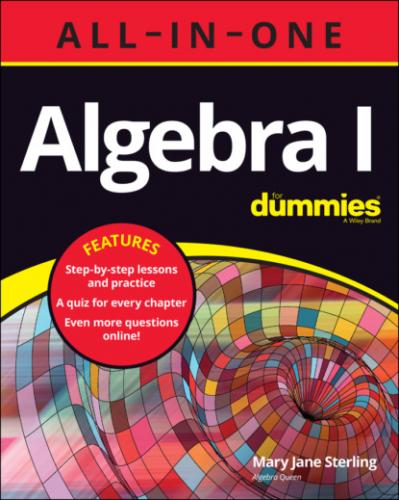13
14 2.
15 24.
16
Chapter 3
Incorporating Algebraic Properties
IN THIS CHAPTER
Algebra has rules for everything, including a sort of shorthand notation to save time and space. The notation that comes with any particular property cuts down on misinterpretation because it’s very specific and universally known. (I give the guidelines for doing operations like addition, subtraction, multiplication, and division in Chapter 2.) In this chapter, you see the specific rules that apply when you use grouping symbols and rearrange terms. You also find how opposites attract — or not — in the form of inverses and identities.
Getting a Grip on Grouping Symbols
The most commonly used grouping symbols in algebra are (in order from most to least common):
Parentheses ( )
Brackets [ ]
Braces { }
Fraction lines / or
Radicals
Absolute value symbols | |
Here’s what you need to know about grouping symbols: You must compute whatever is inside them (or under or over, in the case of the fraction line) first, before you can use that result to solve the rest of the problem. If what’s inside isn’t or can’t be simplified into one term, then anything outside the grouping symbol that multiplies one of the terms has to multiply them all — that’s the distributive property, which I cover in the next section.
A. Add the 4 and 2; then subtract the result from the 16:
Q. Simplify
A. Work from the inside out. First subtract the 7 from the 3; then subtract the –4 from the 6 by changing it to an addition problem. You can then multiply the 2 by the 10:
Q.
A. Combine what’s in the absolute value and parentheses first, before combining the results:
When you get to the three terms with subtraction and addition signs,
Q.
A. You have to complete the work in the denominator first before dividing the 32 by that result:
As you’re working through the problems, just remember to:
Work from the inside out when there are several grouping symbols.
Move from left to right when performing addition and/or subtraction on several different terms.
1
2
3
4
5
6
Spreading, Grouping, and Changing the Order
Three important processes in algebra are the distributive property, the associative property, and the commutative property. Because some operations have these properties, it makes working with the variables and numbers so much easier and nicer.
Distributing the wealth
When an estate is “distributed,” everyone hopes to get an equal share. The distributive property works the same way. The distributive property is used when you perform an operation on each of the terms within a grouping symbol. The following rules show distributing multiplication over addition and distributing multiplication over subtraction:
The
